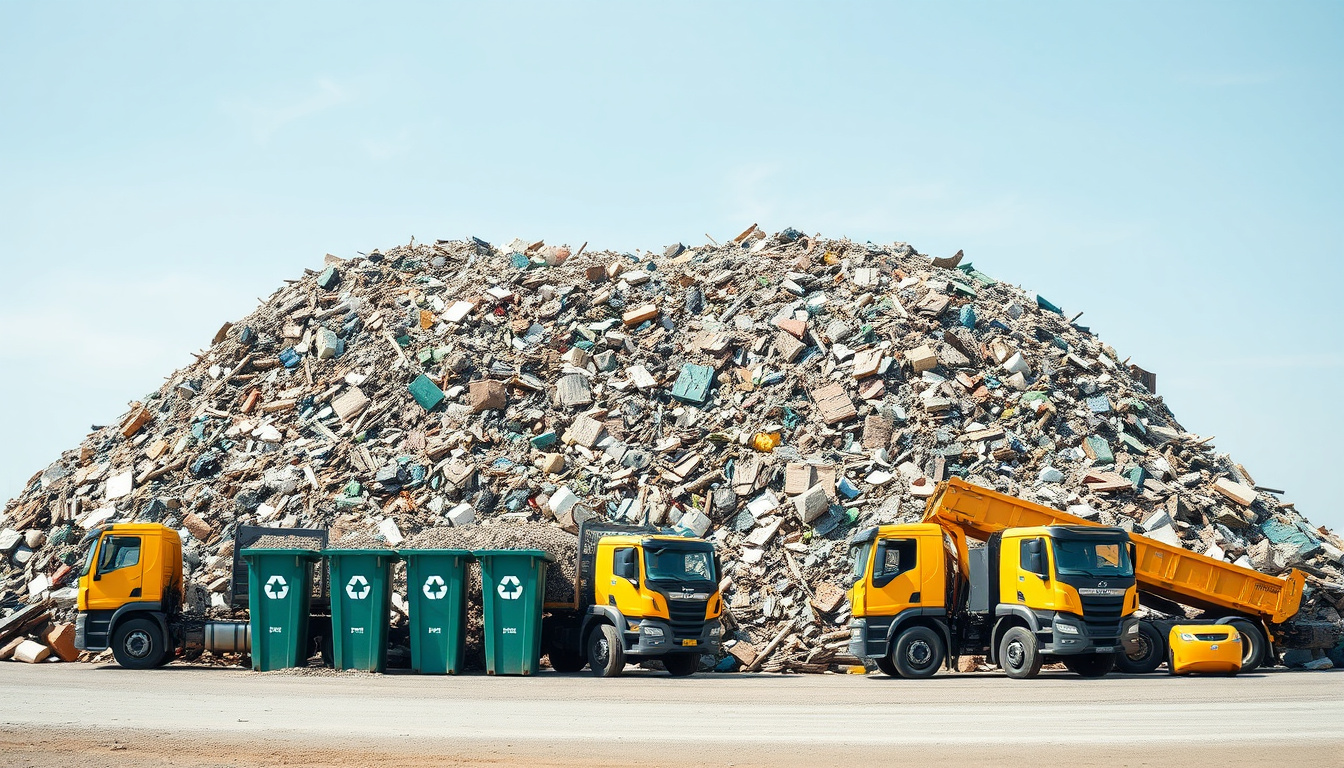Construction debris removal is a crucial yet often overlooked aspect of any building project. Efficient removal of waste materials not only keeps the job site safe and organized but also enhances productivity and sustainability. Whether you’re managing a small renovation or a large-scale commercial development, implementing effective strategies for construction debris removal can save time, reduce costs, and minimize environmental impact. In this article, we’ll explore the top methods to streamline your debris removal process, ensuring your construction site runs smoothly from start to finish.
Why Efficient Construction Debris Removal Matters
Before diving into specific strategies, it’s important to understand why construction debris removal is essential. Construction sites typically generate a significant amount of waste, including concrete, wood, drywall, metals, and packaging materials. Left unmanaged, debris can create hazardous conditions, delay progress, and violate environmental regulations.
Effective debris removal helps:
- Maintain safety by minimizing tripping hazards and fire risks.
- Improve workflow so workers can move freely and focus on tasks.
- Reduce environmental impact through recycling and responsible disposal.
- Cut costs by avoiding penalties and optimizing labor.
With these benefits in mind, let’s review the best ways to tackle construction debris removal on your site.
1. Plan Debris Removal from the Start
Integrating a debris removal plan early in the project lifecycle is fundamental. This involves:
- Assessing the types and quantities of waste expected.
- Scheduling regular debris pickup aligned with construction phases.
- Allocating budget specifically for waste management.
Early planning ensures you won’t be scrambling when debris starts piling up. Plus, it enables contracting with the right waste removal services or renting dumpsters tailored to your specific needs.
2. Segregate Waste for Better Disposal and Recycling
Waste segregation involves separating debris materials into categories such as wood, metal, concrete, plastics, and hazardous waste. Benefits include:
- Easier recycling and reduced landfill use.
- Lower disposal fees since some recycled materials can be sold or processed cheaply.
- Compliance with environmental regulations.
Setting up designated bins or sections on the job site for each waste type encourages workers to dispose of materials correctly and streamlines collection.
3. Use Appropriate Equipment and Containers
Choosing the right equipment accelerates debris removal and reduces labor fatigue. Common tools and containers include:
- Dumpsters and roll-off containers: Available in various sizes for easy debris collection and removal.
- Industrial vacuum trucks: Useful for fine dust and small debris.
- Skid-steer loaders and wheelbarrows: Help move heavier debris efficiently.
- Safety gear: Gloves, goggles, and dust masks protect workers handling debris.
Leveraging appropriate resources minimizes downtime while maintaining high safety standards.

4. Outsource to Professional Debris Removal Services
Many construction companies find it effective to hire professional debris removal services with expertise, equipment, and disposal permits. Advantages include:
- Faster and more reliable waste clearing.
- Proper handling of hazardous materials.
- Compliance with local and federal waste disposal laws.
- Reduced onsite labor dedicated to cleanup.
When vetting such services, verify licenses, insurance, and experience to ensure your debris is managed responsibly.
5. Incorporate Recycling and Reuse Practices
Sustainability is a growing priority in construction. Implementing recycling programs can convert debris into valuable materials for future projects or sale. Some recyclable materials include:
- Metals (steel, copper, aluminum).
- Concrete and bricks (can be crushed and reused as aggregate).
- Wood (usable for pallets or mulch).
- Cardboard and plastics.
By integrating reuse and recycling, you reduce overall waste volume and potentially generate income or savings on raw materials.
6. Train Workers on Best Practices
Even the best plans falter without worker buy-in. Providing training on proper debris management is critical to success. Training topics should cover:
- Correct segregation and disposal methods.
- Safety protocols when handling materials.
- Equipment operation for debris transport.
- Importance of maintaining cleanliness.
Regular refreshers and clear signage around the site reinforce positive habits.
7. Monitor and Adjust the Debris Removal Process
Finally, continuously monitoring debris removal efficiency allows you to identify bottlenecks or safety concerns quickly. Use tools like daily inspections, waste tracking logs, and worker feedback sessions. Adjust your approach as needed to improve:
- Pickup frequency.
- Equipment utilization.
- Training effectiveness.
Adaptability ensures your construction debris removal stays aligned with project timelines and regulations.
Quick Tips Summary: Top Strategies for Construction Debris Removal
- Plan debris removal during project initiation.
- Segregate waste to facilitate recycling.
- Use the right containers and equipment.
- Hire professional debris removal services if needed.
- Promote recycling and reuse initiatives.
- Train workers on safety and disposal procedures.
- Regularly monitor and optimize the process.
FAQ About Construction Debris Removal
Q1: What is the best way to dispose of hazardous construction debris?
A1: Hazardous debris such as asbestos, lead-based paints, or chemicals require specialized handling by licensed professionals to comply with regulations and ensure safety. Never mix hazardous waste with general debris.
Q2: How often should debris be removed from construction sites?
A2: The frequency depends on the project size and waste volume, but generally, debris should be cleared regularly—daily or weekly—to maintain a safe and productive environment.
Q3: What are common recyclable construction debris materials?
A3: Common recyclable materials include metals (steel, copper), concrete, wood, bricks, cardboard, and certain plastics. Sorting these materials onsite improves recycling rates.
Authoritative Source
According to the Environmental Protection Agency (EPA), construction and demolition waste account for millions of tons of debris annually, and implementing effective waste management practices significantly benefits environmental and economic outcomes (source).
Take Control of Your Construction Debris Removal Today
Efficient construction debris removal is integral to the success of any building project, ensuring safety, compliance, and environmental responsibility while enhancing productivity. By planning ahead, using the right tools, training your workforce, and embracing recycling, you can transform debris management from a burden into a streamlined process. Don’t let waste slow you down—start applying these proven strategies now and experience a cleaner, safer, and more efficient job site. Contact a professional debris removal service or consult with your project team today to develop a custom debris removal plan tailored to your needs!
Junk Guys Inland Empire
Phone: 909-253-0968
Website: www.junkguysie.com
Email: junkguysie@gmail.com
